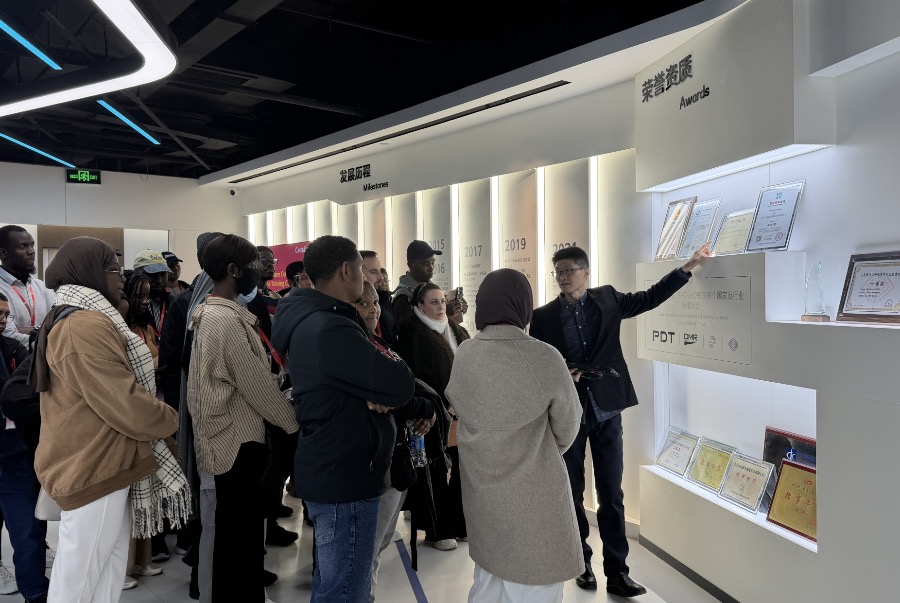
Beijing, China - The 2025 Digital Security Capacity Building Training Course for the South-South Cooperation Program, hosted by the Academy for International Business Officials (AIBO) under China’s Ministry of Commerce, was recently launched in Beijing. Caltta Technologies, a leading provider of private mobile radio (PMR) communication solutions, was invited to share its expertise with more than 40 officials and experts from developing countries.
During a thematic session, Daniel, Solution Director of Caltta’s International Market Division, delivered a presentation titled “Building Independent and Trustworthy Public Safety Private Networks.” Drawing on Caltta’s deployments across more than 60 countries and regions, he introduced the company’s technology approach driven by “full-convergence + intelligence,” and highlighted the practical value of DMR + LTE narrowband-broadband converged networks in emergency response and key-infrastructure protection.
Addressing common concerns around communication confidentiality for public security agencies, Daniel explained the architecture of Caltta’s police-grade encryption system. The solution enables end-to-end protection—from voice signaling to data transmission—supported by dual mechanisms of device authentication and transmission encryption. This design helps reduce risks of eavesdropping, interference, and data tampering.
Participants from several countries noted that China’s practices in building public safety private networks provide useful references for their own national security modernization efforts. Case studies from Zambia, Mozambique, and other regions were particularly well received. Experts from Caltta also engaged in discussions on network architecture, system deployment, and data-security protection.
On the following day, participants visited Caltta’s exhibition hall for an on-site technology demonstration. Guided by technical specialists, they explored core solutions including the full-convergence command-and-dispatch platform and the “space–air–ground integrated” emergency communication system. The system combines intelligent terminals, broadband and narrowband ad-hoc networks, UAVs, body-worn cameras, and visualized command platforms, enabling converged dispatch of voice, video, and data even in scenarios involving road blockages, power outages, or network disruptions.
Caltta also introduced a triple-function body-worn camera designed for frontline operations, featuring high-definition night vision and real-time audio-video transmission to support standardized, accountable law-enforcement processes. During simulated emergency and law-enforcement scenes, participants showed strong interest in the multi-mode terminals and the stability of their real-time collaborative data transmission.
In addition, Caltta presented its integrated sensing-and-vision solution, which enhances long-range detection, video clarity, and target identification for urban security and emergency-response applications.
Participants commented that the visit provided a clear view of China’s progress in public security technologies and helped build a practical platform for knowledge exchange under the South-South Cooperation framework.
Caltta reiterated that “guarding public security” remains its long-term mission. The company will continue advancing the deep integration of AI and private-network communications, and will offer more targeted solutions to help developing countries strengthen their public-security and emergency-response capabilities.